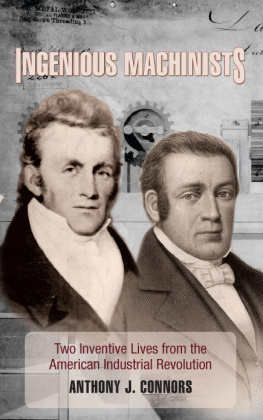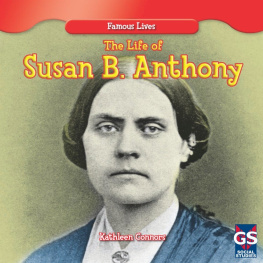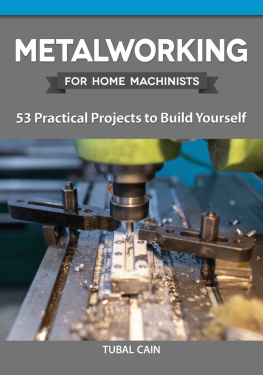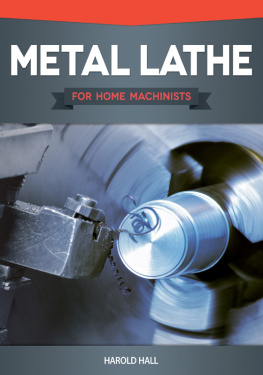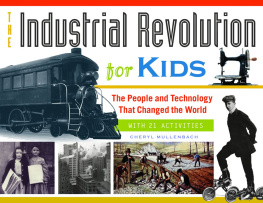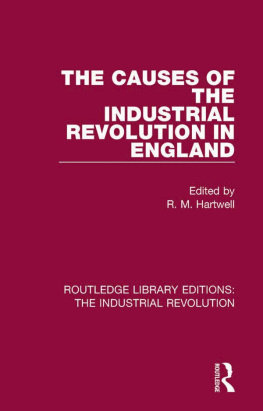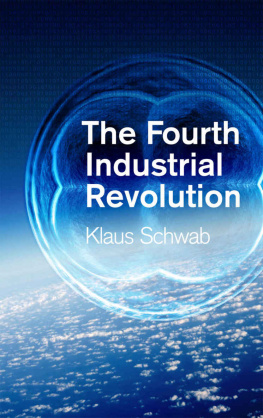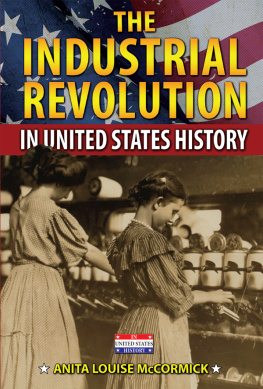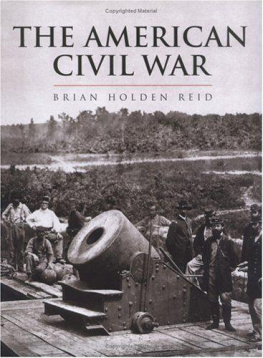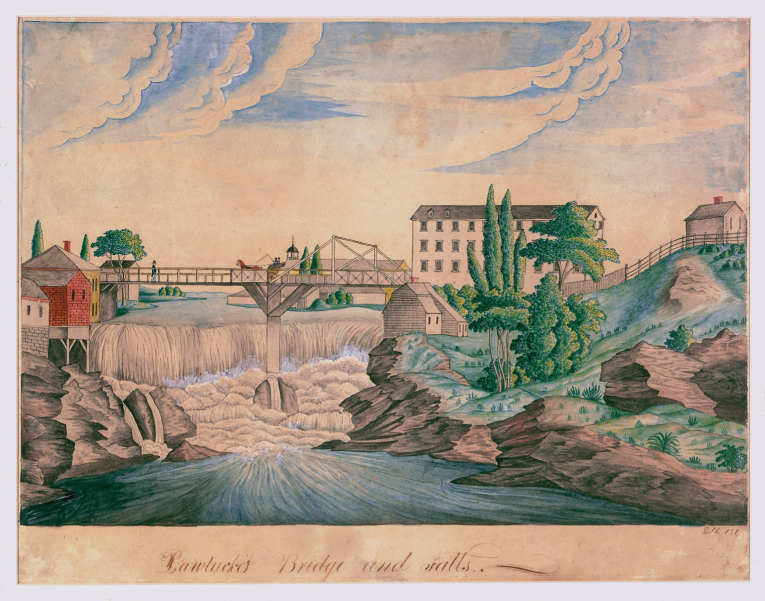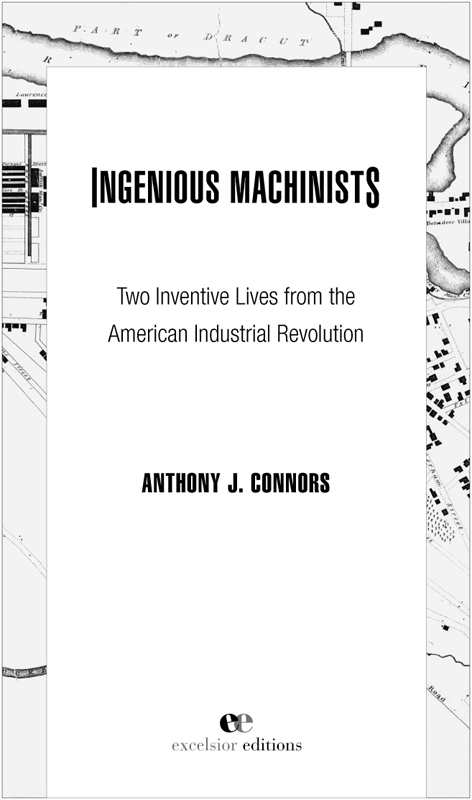I NGENIOUS MACHINIST S
Pawtucket Bridge and Falls (anon., c. 1810), Rhode Island Historical Society.
D.B. (Anonymous). [Pawtucket Bridge and Falls with Slater Mill]. Pawtucket, RI ca. 1810.
Watercolor and ink on paper. Painting. RHi X5 22.
Published by
STATE UNIVERSITY OF NEW YORK PRESS
Albany
2014 State University of New York
All rights reserved
Printed in the United States of America
No part of this book may be used or reproduced in any manner whatsoever without written permission. No part of this book may be stored in a retrieval system or transmitted in any form or by any means including electronic, electrostatic, magnetic tape, mechanical, photocopying, recording, or otherwise without the prior permission in writing of the publisher.
E XCELSIOR E DITIONS
is an imprint of State University of New York Press
For information, contact
State University of New York Press
www.sunypress.edu
Production, Laurie Searl
Marketing, Kate R. Seburyamo
Library of Congress Cataloging-in-Publication Data
Connors, Anthony J.
Ingenious machinists : two inventive lives from the American industrial revolution / Anthony J. Connors.
pages cm. (Excelsior editions)
Includes bibliographical references and index.
ISBN 978-1-4384-5401-6 (hardcover : alk. paper)
ISBN 978-1-4384-5402-3 (pbk. : alk. paper)
E-ISBN 978-1-4384-5403-0 (ebook)
1. Wilkinson, David, 17711852. 2. Moody, Paul. 3. MachinistsUnited StatesBiography. 4. InventorsUnited StatesBiography. 5. Industrial revolutionUnited States. I. Title.
| HD8039.M22U695 2014 |
| 677.02850922dc23 |
| [B] | 2014002126 |
10 9 8 7 6 5 4 3 2 1
To Sharon
and
to the memory of my parents
Contents
Illustrations
Acknowledgments
This book started as a doctoral dissertation, under the guidance of Professor Drew McCoy, whose gentle criticism and clear vision greatly influenced the outcome. Clark University history professors Janette Greenwood and Amy Richter helped sharpen my writing and encouraged me to consider the social implications of this story. I also benefited greatly from the contributions of my fellow Clark history graduate students Russ McClintock, Carol Cullen, Lisa Connelly Cook, and Terry Delaney. The New England Regional Fellowship Consortium provided financial assistance and the opportunity to explore the valuable research collections at the Massachusetts Historical Society, the Harvard Business Schools Baker Library, and the Rhode Island Historical Society.
It was eight years between dissertation and book, as there always seemed to be something else to work on. When I began to prepare it for publication, many people (some who had helped the first time) provided historical guidance and documents, including Gray Fitzsimons and Martha Mayo (Lowell), Andrian Paquette (Slater Mill), Brad Utter (Cohoes), David C. Mountain (Newbury), and the late Betty Johnson (Pawtucket). For illustrations Id like to thank Jack Herlihy (Lowell National Park), Melanie Nichols (Lowell Historical Society), J. D. Kay and Dana Signe Monroe (Rhode Island Historical Society), Kelly Cobble (Adams National Park), and the staffs of the Smithsonian Institution Archives, Pawtucket Public Library, and the New York State Library. Audrey Connors and John Devlin helped prepare the illustrations. Beth Luey offered timely editorial advice, and Professor James Conrad shared his expertise on Samuel Slater. The anonymous SUNY Press readers not only knew the field of industrial history, but offered their critical comments in very productive ways. Everyone I dealt with at SUNY Press was professional and helpful. I would like to thank acquisitions editors Amanda Lanne, Rafael Chaiken, and Jessica Kirschner, production editor Laurie Searl, promotions manager Kate Seburyamo, and copyeditor Alan V. Hewat for making the process very smooth.
Brown University professor Pat Malone knows the industrial history of Pawtucket, Lowell, and Waltham as well as anyone, and as I prepared the book he generously shared his extensive knowledge of the field as well as a superb pen and ink drawing of the Wilkinson and Slater mills by his late father. I would like to thank Dave Ingram, an expert in early iron production, for his general wisdom and friendship. Although not involved in this book, Professor Bob Allison of Suffolk University played an important role in my early graduate work, and provided several confidence-building publishing opportunities.
My family has been a constant source of encouragement. My brother Ned is an avid listener and well-informed critic. I treasure the love and humor of John, Jennifer, Allison, Jenny, and Tim. My wife Sharon has kept me happy and balanced, and to her I owe a special debt of love and gratitude.
Introduction
Machinists in the Early American Republic
There is not a working boy of average ability in the New England States who has not an idea of some mechanical invention or improvement in manufactures, by which, in good times, he hopes to better his position, or rise to fortune and social distinction.
Scottish inventor James Nasmyth, 1854
Their contemporaries called them ingenious machinists. More than a clever near-rhyme, the term suggests the degree to which Americans of the late eighteenth and early nineteenth centuries admired technological innovation and revered the men who could bring practical betterment to their lives by forging nails and tools, building clocks and other intricate machinery, and constructing water-powered mills. In a country of people known for mechanical ability they stood out from the ordinary mechanic, a broad term that might describe a bricklayer, a carpenter, even a shoemaker. Machinists had special aptitudesways of visualizing mechanical processes in three-dimensional spacethat suited them to the design and construction of complex and precise moving machinery, such as lathes, spinning frames, power looms, and steam engines. Some used their distinctive talents to invent; others built machines in textile manufactories or small machine shops, or traveled around the countryside repairing equipment. Some became entrepreneurs and factory owners, while others chose to leave the business issues (and the financial risks) to businessmen.
In general, the initial phase of the American cotton manufacturing boomfrom roughly 1790 to the 1830swas advantageous for textile machinists. Their skills were in high demand, and those who were successful made good salaries or wages, moved geographically to maximize their value, settled down when the conditions were right, bought homes or lived in corporate housing that suited their status, joined churches and self-improvement organizations, and sent their children to good schools. In short, machinists were presented the opportunity to do interesting and important work that was consistent with the ideals of American independence as well as the emerging values of middle-class refinement.

